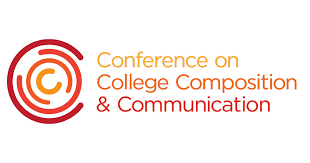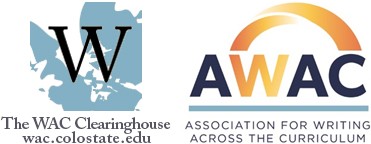Written Communication is Essential: A Howe Award Winner Commits to Improving Writing Instruction in Engineering
Engineering Writing Guide: Rhetorical and Process-Focused
Sidebottom started working on the engineering writing guide—designed for both faculty and students—in the fall of 2019 as a Howe Faculty Writing Fellow, where he and colleague Muhammad Jahan first set out to learn more about the types of writing assignments engineering faculty and students encountered. They surveyed the faculty in their department and identified assignments such as lab reports, design reports, and research reports as among the most commonly-assigned genres, in addition to literature reviews and the larger thesis project that master’s students complete as part of their engineering degrees. Their work as part of the Fellows program, then, was to start a writing guide that could further tease out the conventions and expectations of such genres, as well as overview the current state of writing in MME. Their goal going in, as Sidebottom describes it, was “helping students be more critical of their own writing and lead them to work on their own critical writing.”
The writing guide goes beyond just presenting an example or creating a set of “rules” to follow. Just as we at the HCWE recognize that writing mediates activity and helps us get things done through recognizable and recurring forms, so too does Sidebottom. The goal of the guide is to “explain to the student what the purpose of writing this type of assignment is, where the kind of assignment would be used [in the engineering world], and how the skills they used in prior classes could be applied toward this writing assignment.” Each section of the guide explains different parts of a report, their purposes, and audiences and encourages students to consider these factors in every writing assignment they encounter. Sidebottom hopes students will have “a better way to reflect on their writing instead of just looking for how many pages it is or something that's arbitrary.” The guide strives toward better situating and making explicit some of the conventions of engineering and technical writing that students encounter in their daily lives as students and will encounter in the future as practitioners. This is an important goal that helps promote writing transfer between course contexts.
The Role of Learning Theory in Teaching Writing
In both his work on the guide and also overall with his students, Sidebottom has been greatly influenced by what he’s learned about research on writing processes and learning, from his participation in Fellows, other HCWE workshops, and also with our partners at the Center for Teaching Excellence (CTE). “By going to the Howe Center, you learn also about the learning process,” he reflects. “I think it really helps you empathize with your students and try to understand where they're coming from.” Students of all levels bring prior knowledge and experiences with them, but they don’t always have as much or the kind that faculty expect of them for a variety of reasons. The job of an instructor is not only to teach new content but also assess what students do or do not already know coming in.
 As Sidebottom put it, “It’s important to try to identify where professors unconsciously know something when their students don't know that they know it, or they don't know that they don't know it.” This is the work of the writing guide, in part, as it provides students with an opportunity to see what is expected of them and then invites further discussion and conversation about expectations and questions they may have. Learning theory also helps Sidebottom consider how the different parts of a curriculum add up. “You're not just teaching little bits and pieces [in a course] but you're trying to connect it back to the bigger picture,” he notes. “In the practice of engineering, you have to consider all those factors.”
As Sidebottom put it, “It’s important to try to identify where professors unconsciously know something when their students don't know that they know it, or they don't know that they don't know it.” This is the work of the writing guide, in part, as it provides students with an opportunity to see what is expected of them and then invites further discussion and conversation about expectations and questions they may have. Learning theory also helps Sidebottom consider how the different parts of a curriculum add up. “You're not just teaching little bits and pieces [in a course] but you're trying to connect it back to the bigger picture,” he notes. “In the practice of engineering, you have to consider all those factors.”
Future Planning
While the writing guide is complete and is ready to be shared with students both for usage and for feedback, Sidebottom and his engineering colleagues are thinking forward to further uses of the guide and conversations as faculty members who teach disciplinary writing. As part of an ongoing assessment, MME is working to create more alignment and consistency across the kinds of reports and writing assigned in courses. The department hopes to create a set of recommendations for faculty who are creating and designing writing assignments, which would help provide consistency in how faculty in the department talk about writing. Such consistency and department-level work would complement the writing guide. Sidebottom explains that “the faculty would set up their assignments so that the students could use the writing guide to help them complete them.” The writing guide is thus a resource that students could use in multiple courses for numerous kinds of writing assignments.
Overall, Sidebottom has taken numerous efforts to innovate writing instruction in and across MME, including the writing guide, but also his efforts to lead discussion around assessment of student writing and designing writing assignments. As Chair and Professor of MME Amit Shukla described it in his Howe Award nomination letter, Sidebottom’s work has “dramatically enhanced an already strong writing in curriculum experience for MME students by improving how writing is taught, and learned, across courses and time in MME.” Shukla further describes Sidebottom’s efforts in creating the writing guide as work that “provides a framework, a resource, and a guide to students and faculty in MME, essentially establishing a standard for writing in engineering curriculum.”
Sidebottom’s experiences suggest some important questions around student learning that all instructions should consider when creating writing assignments:
- How can you design assignments for your students that incorporate writing?
- How can you help students consider and write for their audiences?
- How could you help students understand what your discipline values?
The Miami community and the College of Engineering and Computing will only benefit as Sidebottom’s guide is published and more research is done on how it supports student success. What’s more, students across engineering will think more critically and carefully about the writing genres they encounter in their courses and in their broader work as engineers, considering how writing helps them “get things done.”
The engineering writing guide will be published online soon. In the meantime, learn more about the Faculty Fellows program and how to apply as a departmental team by visiting Faculty Writing Fellows Program.
Howe Writing Across the Curriculum Programs
The mission of the Howe Writing Across the Curriculum Programs is to ensure that all Miami faculty and graduate teaching assistants can effectively include writing as a means to support learning in their courses and programs.

 “It's something that I've used a lot in my career,” he explains, “and especially written communication is essential. If you can understand what goes into technical writing and you can think about it critically, it helps you in terms of your communication with other people.”
“It's something that I've used a lot in my career,” he explains, “and especially written communication is essential. If you can understand what goes into technical writing and you can think about it critically, it helps you in terms of your communication with other people.”
